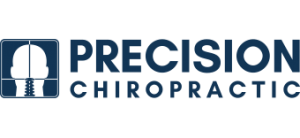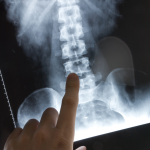If you have been struggling with neck pain and are looking for a solution, this is the article for you.
For such a relatively small area and size comparatively to the rest of the body, the neck (cervical spine) is one of the most complex and neurologically rich areas in the body. There are around 200 muscle spindles per gram of muscle tissue in the upper neck region compared to 2-4 in the latissimus dorsi (the big chunk of muscle in your middle back). (1)
What does 100x muscle spindles per gram of tissue mean?
It means it is VERY important and sensitive to dysfunction.
If there is an issue with the upper cervical spine, a wide range of secondary symptoms could result including but not limited to: headaches, migraines, vertigo, trigeminal neuralgia, dizziness, brain fog, poor sleep, low energy, central sensitization or regional pain syndromes, and neck and arm pain.
At Precision Chiropractic in Matthews, this is something we see and help people with on a daily basis.
The Anatomy of the Cervical Spine
Here is a little background for you to help create some knowledge and perspective.
You have 7 vertebrae (bones in your neck), and your skull (head) sits on the top one.
The neck anatomy is very unique and super interesting. First of all, most of 24 vertebrae in the spine are very similar except for the top 2! The atlas (C1) is like a ring with curved shelves on the top which acts as a platform for the occiput (base of the skull). Then you have the Axis (C2) which provides a platform for the Atlas but also has piece pointing out of the top that extends into the atlas and provides an “axis” of rotation. That’s why the C2 is called the Axis bone! Pretty interesting, huh?
These 3 bones are crucial structures for the attachments of the 4 suboccipital muscles: rectus capitis posterior major, rectus capitis posterior minor, obliquus capitus superior, and obliquus capitis inferior. Then you have the big muscles like the trapezius, levator scapulae, and sternocleidomastoid that all attach there as well.
The Function of the Cervical Spine is Crucial for Health
Anyone who says the structural alignment and activation of this area is NOT important is crazy. This is one of the reasons why I cringe when see people trying to manipulate their own neck or see videos online of therapists gross manipulating the cervical spine. Not only does it look bad, but it is dangerous as well.
If you or someone you know is having an issue with their neck, it is vital that you seek out a professional who is going to do a thorough examination and has an deep knowledge of the cervical spine, what normal and abnormal is, and creates a specific and personalized plan of correction.
Now that you know more about the anatomy of the upper cervical spine, let talk a little bit about the physiology. My purpose is not to make you an expert but to equip you with the resources to understand your body so you can make better decisions about your healthcare.
Physiology of the Cervical Spine
The neck is one of the structures that has given up stability for mobility. You should have almost 90 degrees of rotation each way, 70 degrees of extension, 90 degrees of flexion, and 45 degrees of lateral flexion. (2) When standing up straight, your head and shoulders should form a perfect cross, and your head from the side should be directly over the shoulders and not shifted anteriorly. Any head tilt, high shoulder, or Anterior Head Syndrome (AHS) could indicate a problem.
One of the cool things about the neck is the coupled motion that happens. This is when 2 movements happen simultaneously for normal function. For example, when you tilt your head to the left, not only does the neck laterally flex but the posterior elements of the bones rotate to the contralateral side. Again, you don’t have to be an expert here, but I just really want you to appreciate how complex and important the cervical spine is.
If you want to begin to rebuild the neck, the next thing we want to focus on is 3 main components: Alignment, Stability, and Mobility.
Cervical Alignment
It doesn’t take a rocket scientist to figure out why the alignment of your cervical spine is so important. I could go into proprioception, dysafferentation, the Righting Reflex, and on and on but the most important thing is to understand is that the alignment of your cervical spine and craniocervical junction have a major impact on brain function and also has a global impact on the rest of the body. This is where a highly skilled NeuroStructural Chiropractor is absolutely crucial.
Cervical Stability
We want to create stability before we create mobility. Many times the lack of mobility is a protective mechanism and secondary to a lack of stability. If we stabilize the neck, many of the protective mechanisms release and the mobility begins to come back. This is where many of the isometric neck exercises come in handy.
Cervical Mobility
Once any abnormal Structural Shifts are corrected and stability is regained, much of the normal mobility will be restored. But if there is anything left over, you’ll need to address those movements specifically. Some big muscles we usually want to look at that might be restricted are going to be the trapezius, levator scapulae, scalenes, SCM, pec minor, and latissimus dorsi.
If you have made it this far reading, congratulations and thank you for taking the time go through this information. I hope you have found it valuable. Please share this with anyone else you think it might help, and reach out to us with any questions. We are always here to serve you.
1) https://www.ncbi.nlm.nih.gov/pubmed/11799407
2) https://www.ncbi.nlm.nih.gov/pmc/articles/PMC1250253/
Sincerely,
Dr. Matt Westheimer


